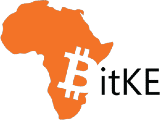The International Monetary Fund (IMF) has expressed disappointment over the relatively low adoption of Nigeria’s Central Bank Digital Currency (CBDC) more than a year since its launch.
Initially, there was some success with wallet downloads, which reached 500,000 units within the first 25 days. However, the rate of adoption slowed significantly over time, with the number of downloads reaching 860,000 by November 2022.
The volume and value of transactions involving the #eNaira CBDC have been relatively constrained.
While the eNaira experienced a recent surge in usage due to cash shortages, the majority of wallets (98.5%) remain inactive on a weekly basis, indicating limited regular usage. pic.twitter.com/K06IleLfnQ
— BitKE (@BitcoinKE) June 28, 2023
According to a paper published in May 2023, merchants, in particular, have exhibited a sluggish uptake of the Central Bank Digital Currency (CBDC), contributing to the overall slow adoption. Furthermore, retail customers have generally shown a lack of interest in signing up, resulting in the total number of onboarded clients struggling to surpass 1% of active bank accounts.
Likewise, the volume and value of transactions involving the CBDC have been relatively constrained. While the eNaira experienced a recent surge in usage due to cash shortages, the majority of wallets (98.5%) remain inactive on a weekly basis, indicating limited regular usage.
Furthermore, the paper highlights that the total number of eNaira transactions since its launch, approximately 802,000, is lower than the number of eNaira wallets. This suggests that a significant portion of current wallet holders have not utilized their wallets beyond the initial usage after opening them.
The IMF posits that one possible reason for the sluggish adoption of the eNaira could be Nigeria’s phased approach to the CBDC implementation. Initially, access to the eNaira was limited to bank account holders which may have hindered broader adoption and usage among the general population.
In order to address the core objective of financial inclusion, the central bank of Nigeria has progressed to phase 2 of the CBDC implementation. This phase involves extending coverage to the unbanked population and individuals without internet access through a tiered Know Your Customer (KYC) system.
Over 4 million Nigerian
farmers to benefit from the Association of Northern Agricultural and Allied Commodities Practitioners (ANAACOP) under the 'Agro e-Naira Engagement' Program in collaboration with the @cenbank pic.twitter.com/Sx7WHKdHGO
— BitKE (@BitcoinKE) May 11, 2023
Depending on the level of information provided, the system incorporates transaction and balance caps to ensure appropriate controls are in place.
In terms on improving adoption, one recommendation put forth is to integrate the eNaira with Nigeria’s fragmented mobile money system to improve the efficiency of social cash transfers. This integration would enable government aid programs to leverage the eNaira, which has been instrumental in driving adoption and usage of the digital currency.
In addition, the IMF highlights that incorporating features like programmable payments or cash rebates into the eNaira could potentially address the slow consumer adoption and expedite private sector investment.
According to the IMF, the eNaira holds significant potential for streamlining the remittance process. This has the potential to enhance transparency, expand Nigeria’s tax base, and, importantly, reduce costs for remittance senders. However IMF says that for the eNaira to gain user adoption, the exchange rates associated with any conversion would need to closely align with parallel market rates.
By offering additional benefits and incentives, these enhancements could encourage wider acceptance and usage of the digital currency among consumers and stimulate increased investment from the private sector.
Follow us on Twitter for latest posts and updates
____________________________________
____________________________________








